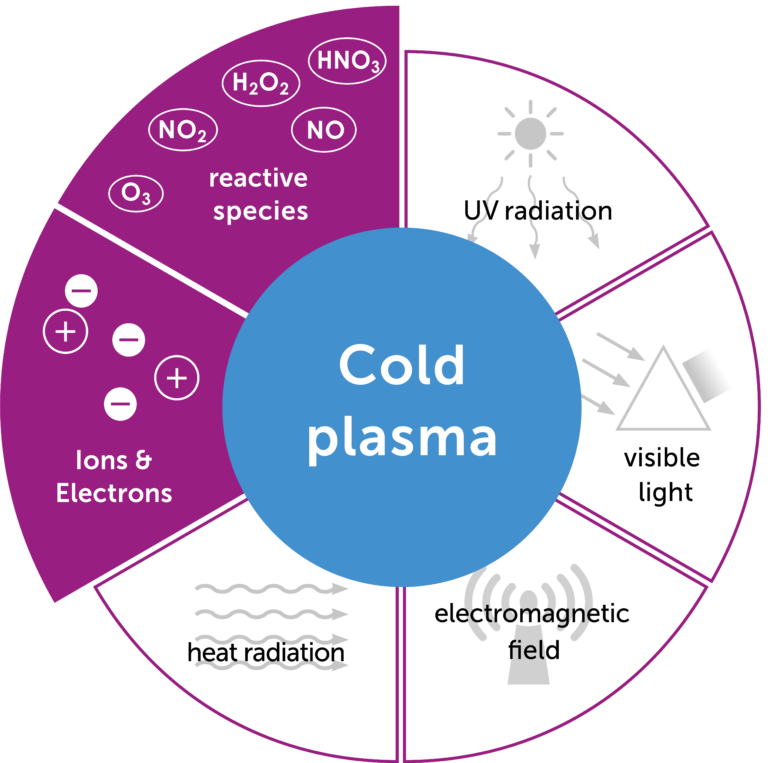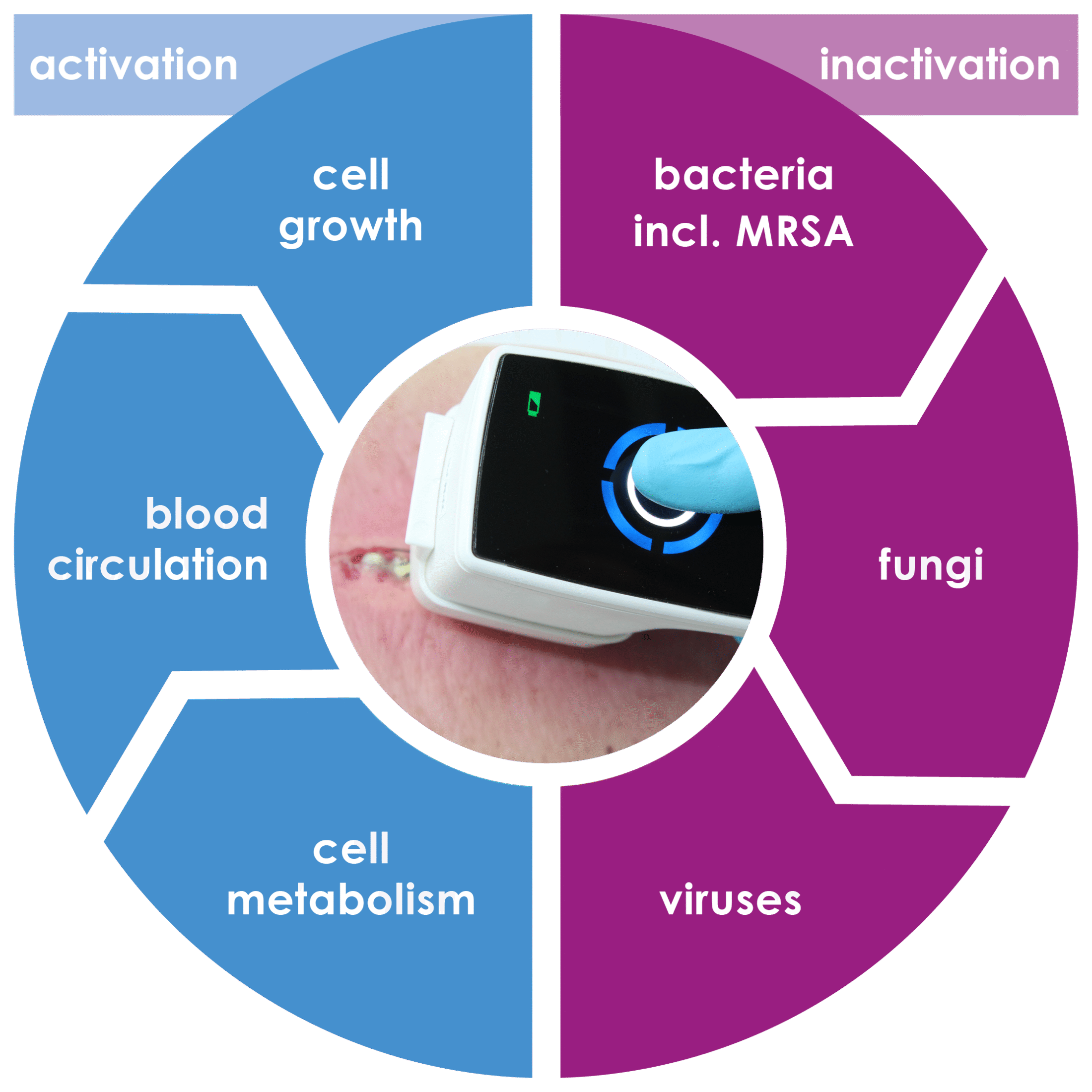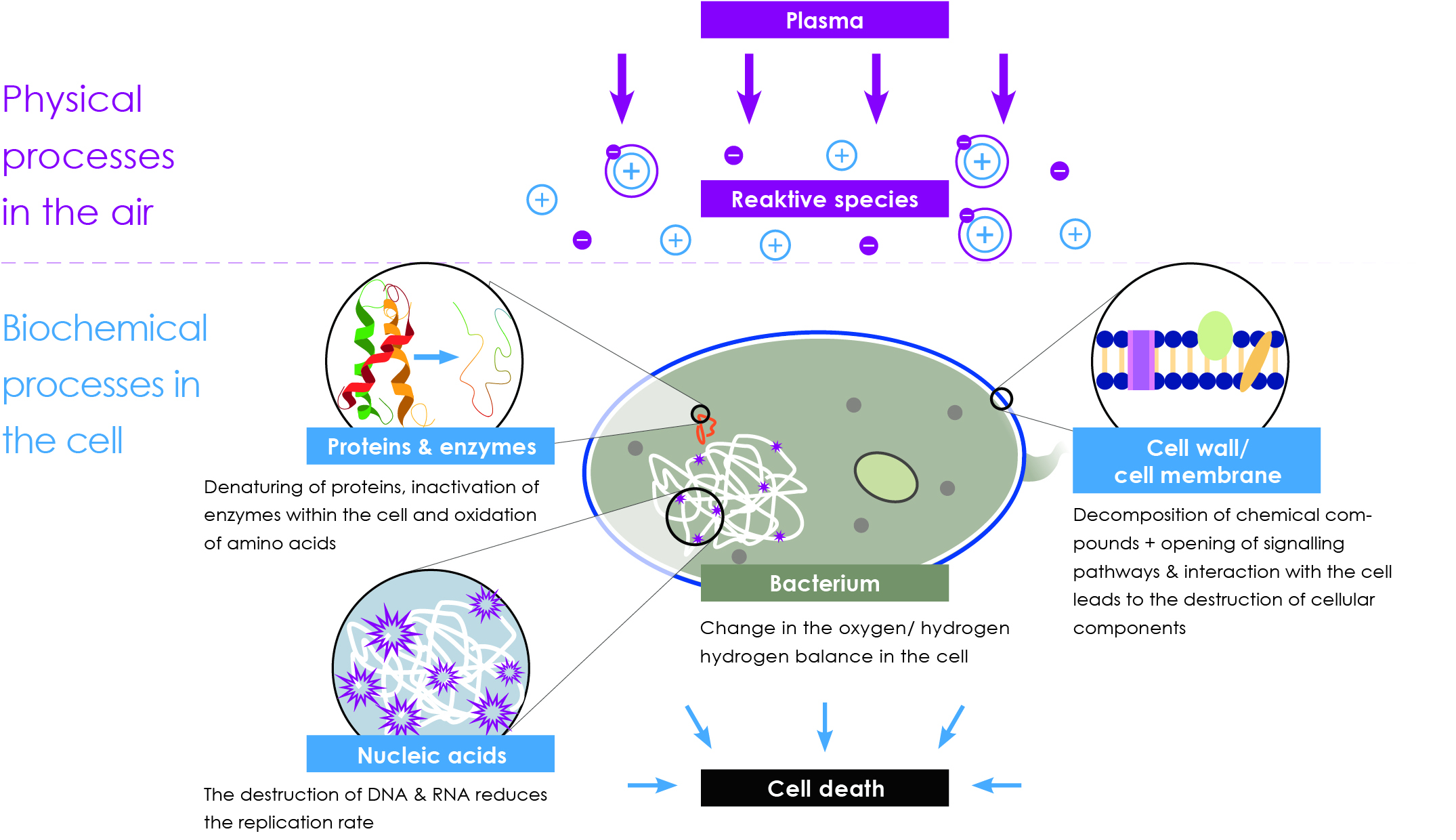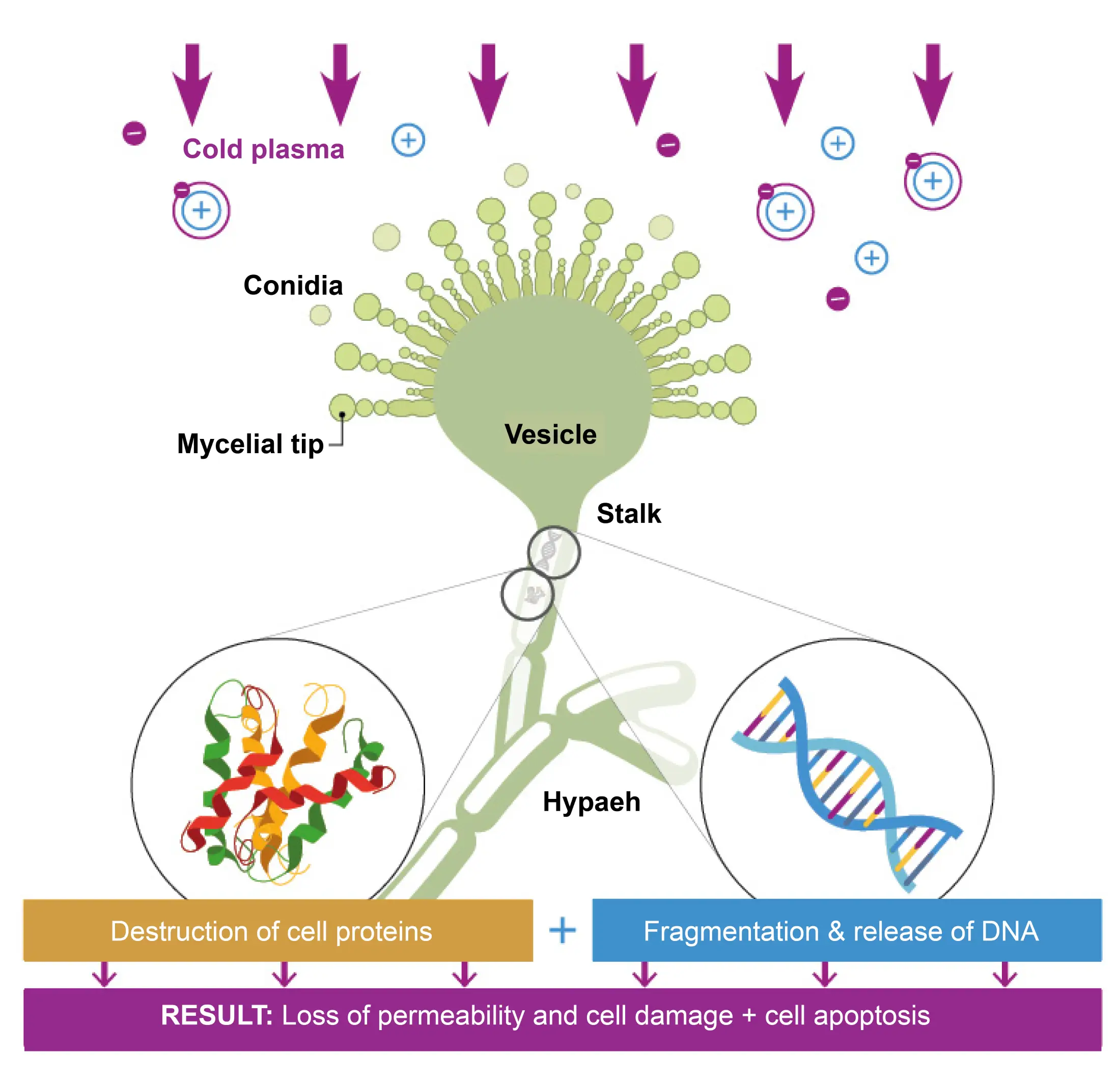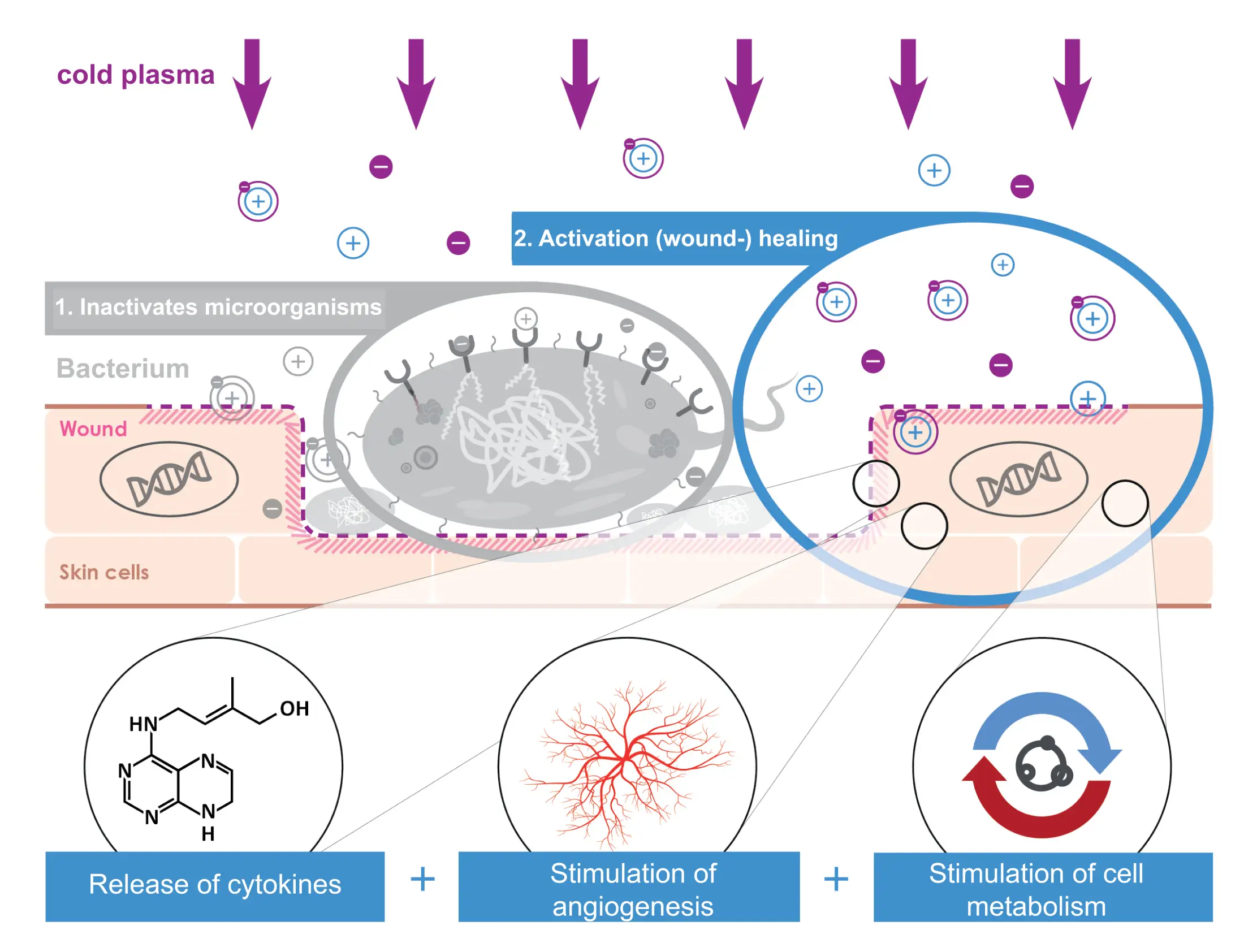1 Zimmermann, J. L. et al. Test for bacterial resistance build-up against plasma treatment. New J. Phys. 14, 073037 (2012).
2. Maisch, T. et al. Decolonization of MRSA, S. aureus and E. coli by cold-atmospheric plasma using a porcine skin model in vitro. PloS One 7, e34610 (2012).
3. Heinlin, J. et al. Contact-free inactivation of Trichophyton rubrum and Microsporum canis by cold atmospheric plasma treatment. Future Microbiol. 8, 1097-1106 (2013).
4. Daeschlein, G. et al. Skin and wound decontamination of multidrug-resistant bacteria by cold atmospheric plasma coagulation. J. Dtsch. Dermatol. Ges. J. Ger. Soc. Dermatol. JDDG 13, 143-150 (2015).
5. Bunz, O. et al. Cold atmospheric plasma as antiviral therapy – effect on human herpes simplex virus type 1. J. Gen. Virol. 101, 208-215 (2020).
6. Isbary, G. et al. Randomized placebo-controlled clinical trial showed cold atmospheric argon plasma relieved acute pain and accelerated healing in herpes zoster. Clin. Plasma Med. 2, 50-55 (2014).
7. Lee, J. et al. Fast and easy disinfection of coronavirus-contaminated face masks using ozone gas produced by a dielectric barrier discharge plasma generator. http://medrxiv.org/lookup/doi/10.1101/2020.04.26.20080317 (2020) doi:10.1101/2020.04.26.20080317.
8. Arndt, S., Unger, P., Berneburg, M., Bosserhoff, A.-K. & Karrer, S. Cold atmospheric plasma (CAP) activates angiogenesis-related molecules in skin keratinocytes, fibroblasts and endothelial cells and improves wound angiogenesis in an autocrine and paracrine mode. J. Dermatol. Sci. 89, 181-190 (2018).
9. Maisch, T. et al. Investigation of toxicity and mutagenicity of cold atmospheric argon plasma. Environ. Mol. Mutagen. 58, 172-177 (2017).
10. Boxhammer, V. et al. Investigation of the mutagenic potential of cold atmospheric plasma at bactericidal dosages. Mutat. Res. 753, 23-28 (2013).
11. Isbary, G. et al. Cold atmospheric argon plasma treatment may accelerate wound healing in chronic wounds: Results of an open retrospective randomized controlled study in vivo. Clin. Plasma Med. 1, 25-30 (2013).
12. Heinlin, J. et al. Randomized placebo-controlled human pilot study of cold atmospheric argon plasma on skin graft donor sites. Wound Repair Regen. Off. Publ. Wound Heal. Soc. Eur. Tissue Repair Soc. 21, 800-807 (2013).
Source Fungi mode of action:
1. Maisch, T. et al. Decolonization of MRSA, S. aureus and E. coli by cold-atmospheric plasma using a porcine skin model in vitro. PloS One 7, e34610 (2012).
2. Becker, S. et al. Effects of cold atmospheric plasma (CAP) on bacteria and mucosa of the upper aerodigestive tract. Auris. Nasus. Larynx 46, 294-301 (2019).
3. Isbary, G. et al. A first prospective randomized controlled trial to decrease bacterial load using cold atmospheric argon plasma on chronic wounds in patients. Br. J. Dermatol. 163, 78-82 (2010).
4. Zimmermann, J. L. et al. Test for bacterial resistance build-up against plasma treatment. New J. Phys. 14, 073037 (2012).
5. Heinlin, J. et al. Contact-free inactivation of Trichophyton rubrum and Microsporum canis by cold atmospheric plasma treatment. Future Microbiol. 8, 1097-1106 (2013).
6. Shapourzadeh, A. et al. Inhibitory effects of cold atmospheric plasma on the growth, ergosterol biosynthesis, and keratinase activity in Trichophyton rubrum. Arch. Biochem. Biophys. 608, 27-33 (2016).
7. Daeschlein, G. et al. In Vitro Killing of Clinical Fungal Strains by Low-Temperature Atmospheric-Pressure Plasma Jet. IEEE Trans. Plasma Sci. 39, 815-821 (2011).
8. Kaloriti, D. et al. Mechanisms Underlying the Exquisite Sensitivity of Candida albicans to Combinatorial Cationic and Oxidative Stress That Enhances the Potent Fungicidal Activity of Phagocytes. mBio (2014) doi:10.1128/mBio.01334-14.
9. Misra, N. N., Yadav, B., Roopesh, M. S. & Jo, C. Cold Plasma for Effective Fungal and Mycotoxin Control in Foods: Mechanisms, Inactivation Effects, and Applications: Cold plasma for effective fungal…. Compr. rev. food sci. food saf. 18, 106-120 (2019).
10. Arndt, S., Unger, P., Berneburg, M., Bosserhoff, A.-K. & Karrer, S. Cold atmospheric plasma (CAP) activates angiogenesis-related molecules in skin keratinocytes, fibroblasts and endothelial cells and improves wound angiogenesis in an autocrine and paracrine mode. J. Dermatol. Sci. 89, 181-190 (2018).
11. Hasse, S. et al. Induction of proliferation of basal epidermal keratinocytes by cold atmospheric-pressure plasma. Clin. Exp. Dermatol. 41, 202-209 (2016).
12. Arndt, S. et al. Cold atmospheric plasma (CAP) changes gene expression of key molecules of the wound healing machinery and improves wound healing in vitro and in vivo. PloS One 8, e79325 (2013).
